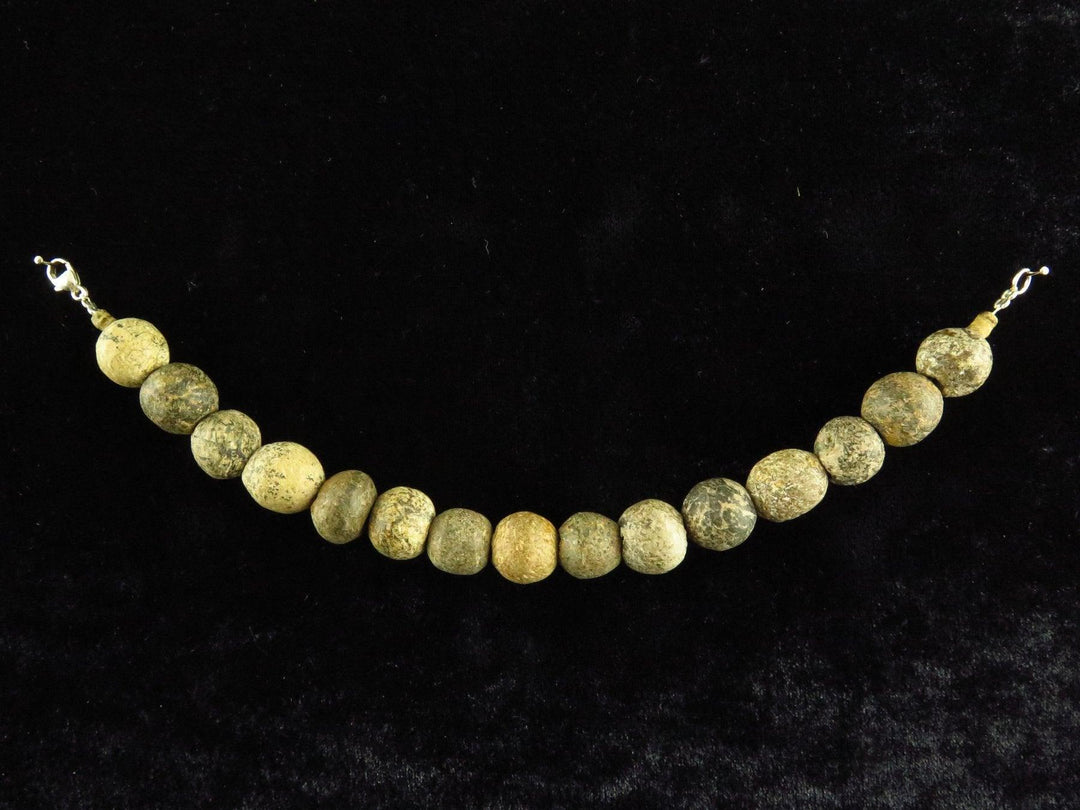
Pleistocene Era: Artifacts from the Age of Ice and Early Humans (50000BCE - 11700BCE)
Delve into the Pleistocene Epoch with our collection of genuine artifacts. Experience the era of mammoths, saber-toothed cats, and the dawn of human civilization, as Earth underwent dramatic climatic changes.
The Pleistocene Epoch - spanning from about 2.6 million to 11,700 years ago, this epoch is often referred to as the 'Ice Age.' It was a time of vast ice sheets, megafauna, and significant evolutionary steps for early humans.
Key Highlights:
- Ice Ages: The Pleistocene is characterized by repeated glaciations, where vast ice sheets covered large parts of the Northern Hemisphere.
- Megafauna: This epoch saw the rise of large mammals like the woolly mammoth, mastodon, saber-toothed cat, and giant ground sloths.
- Early Humans: Significant evolutionary milestones, including the emergence of Homo erectus, Neanderthals, and eventually Homo sapiens, occurred during this time. It also witnessed the first evidence of art, tools, and early settlements.
- Flora and Climate: The Pleistocene had diverse vegetation zones, from tundras to tropical forests, influenced by the glacial-interglacial cycles.
Regions: The Pleistocene Epoch had its imprints across the globe:
- Eurasia: Home to Neanderthals and the site of significant human migrations and settlements.
- Africa: Often referred to as the 'cradle of humanity,' it saw the evolution of various Homo species.
- Americas: Witnessed the migration of early humans across the Bering land bridge and the rise of prehistoric cultures.
- Australia: Known for its unique megafauna like the Diprotodon and giant kangaroos.
Valued Materials: During the Pleistocene, early humans utilized various materials for survival and expression:
- Stone: The primary material for crafting tools and weapons.
- Bone and Ivory: Used for tools, art, and ornamentation.
- Wood and Plant Fibers: Employed in constructing shelters, tools, and clothing.
- Clay and Ochre: Used for early pottery and cave art.
Relevant Time Periods: The Pleistocene Epoch can be divided into various stages based on climatic and evolutionary events:
- Early Pleistocene (c. 2.6 million–800,000 years ago): Marked by the first glaciations and the emergence of Homo erectus.
- Middle Pleistocene (c. 800,000–130,000 years ago): Saw the dominance of Neanderthals and the spread of early humans across continents.
- Late Pleistocene (c. 130,000–11,700 years ago): Characterized by the last glacial maximum and the emergence of anatomically modern Homo sapiens.
Step into our curated collection of Pleistocene artifacts, each echoing tales of early humans, majestic megafauna, and the ever-changing Earth. From intricately carved bone tools to fossilized remains of extinct animals, immerse yourself in the rich heritage of an epoch that laid the foundation for the world as we know it.




